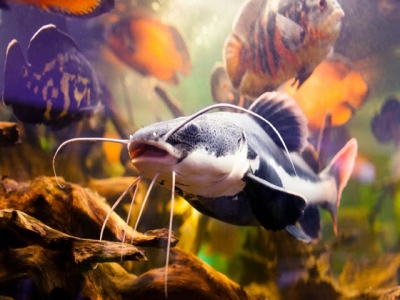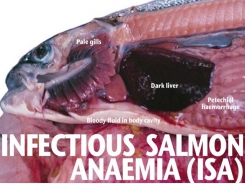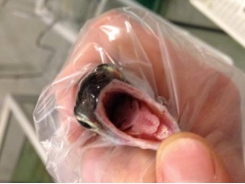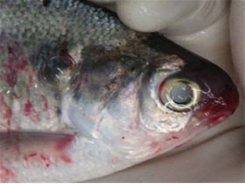Fish disease guide - Enteric Septicaemia of Catfish

What is it?
Enteric septicaemia of catfish, or Hole-in-the-Head disease, is caused by the bacterium Edwardsiella ictaluri, which belongs to the family Enterobacteriaceae.
A highly infectious bacterial disease, the Ictaluridae, Plotosidae, Clariidae, Siluridae, Pangasiidae, Ariidae and ictalurids famillies of catfish are affected.
Several non-catfish species are also affected including seabass, salmon and trout.
Where and When Might it Occur?
Horizontal transmission via the faecaloral route, cannibalism, and contact with contaminated water and materials used in handling infected fish are known to spread the disease.
Disease occurs primarily at water temperatures between 18C and 28C, making spring and autumn the most common times for outbreaks. Stress is often a predisposing factor.
The intestinal tract is the primary site of infection for the acute septicaemic form. The chronic encephalitic form is thought to establish after entering fish via the olfactory sacs.
Surviving catfish carry the bacterium, which also seems to be able to survive in the intestinal tracts of other fish species.
The bacterium can survive three to four months in pond water, mud and vegetation.
Diagnosis
Infected fish often show lethargic swimming, abnormal behavior alternating listlessness and chaotic swimming, disorientation and swimming in spirals.
A loss of appetite and protruding the head from the water are also seen.
Gross pathological signs in the chronic encephalitic form are:
• swelling on top of the head, occasionally progressing to the erosion of connective tissue and exposure of the brain (a hole in the head)
• granulomatous inflammation of the brain.
Gross pathological signs in the acute septicaemic form are:
• pale gills
• darkening of the skin (observed in species other than channel catfish)
• multiple small white spots on the skin
• raised skin patches progressing to shallow ulcers on the flanks and head
• haemorrhage at the base of the fins, around the mouth, and on the throat, operculum (gill cover) and abdomen
• exophthalmos (popeye)
• swollen abdomen (pot-belly)
• ascites (fluid in the abdominal cavity)
Có thể bạn quan tâm
Phần mềm

Phối trộn thức ăn chăn nuôi

Pha dung dịch thủy canh

Định mức cho tôm ăn

Phối trộn phân bón NPK

Xác định tỷ lệ tôm sống

Chuyển đổi đơn vị phân bón

Xác định công suất sục khí

Chuyển đổi đơn vị tôm

Tính diện tích nhà kính

Tính thể tích ao hồ




 Vegetable choline may boost tilapia growth, antioxidant status
Vegetable choline may boost tilapia growth, antioxidant status  Fish disease guide - Viral Haemorrhagic Septicaemia (VHS)
Fish disease guide - Viral Haemorrhagic Septicaemia (VHS)